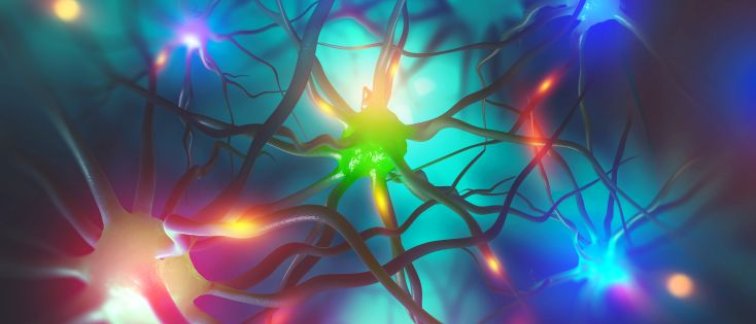Glioblastoma is an aggressive cancer that occurs in the brain. The prognosis is poor, with a median length of survival after a diagnosis of only 15-18 months. Treatment of glioblastoma is also difficult, but may slow down progression of the cancer for some time. Standard treatment starts with surgery followed with a combination of chemotherapy and radiation therapy.
Recent research has revealed that growth of glioblastoma depends not only on the characteristics of the tumor cells, but also the activity of the healthy tissue surrounding it. High neuronal activity in brain cells around the tumor has been shown to accelerate its growth. Likewise, glioma cells can remodel the neuronal microenvironment toward hyperactivity, and widespread alterations in communication between brain regions occur, even at a distance from the tumor itself. This dynamic interplay between tumors and their environment is an intense area of research for all types of cancer and holds promise for the development of new therapies.
Visualizing brain activity
Dr. Linda Douw, associate professor of neuroscience, is using magnetoencephalography (MEG), the measurement of the magnetic field generated by the electrical activity of neurons, and electroencephalography (EEG), the measurement of electrical activity in the brain, to see if brain activity correlates with the aggressiveness of glioblastoma.
We aim to investigate whether increased brain activity is a marker for renewed tumor growth during and after initial surgery and chemo-radiotherapy”, says Dr. Douw.
These non-invasive and relatively easy methods of measurements might have the potential to serve as a prognostic biomarker to track the progression of the cancer, especially during the primary treatments of radiation and chemotherapy. During this period of treatment, it is a huge clinical challenge to distinguish between progression of the glioblastoma, and pseudo-progression. Pseudo-progression is a phenomenon where it appears (based on medical imaging) the tumor is growing or new lesions are forming, when in fact actual tumor growth has stopped. This is believed to be a side effect of the combination of chemotherapy and radiation treatments occurring in up to 66% of patients, which severely complicates treatment optimization.
Better tools for monitoring treatment response are greatly needed to treat patients at the right time with the right strategy,” says Dr. Douw. If brain activity can discriminate between true and false progression, then our method will allow for more optimized treatment.
Research to predict glioblastoma progression
With the project entitled “GOALS2: Glioblastoma brOAdband power as a Longitudinal biomarker for tumor progreSsion”, partly funded by the Dutch Cancer Society (KWF) in September 2020, Dr. Douw will follow patients over time to see if MEG/EEG can indeed serve as a marker for progression, and to investigate if the method can distinguish between progression and pseudo-progression of glioblastoma.
For more information, see a short interview with Linda Douw on Youtube - Onderzoekers verrast met KWF-financiering - YouTube

